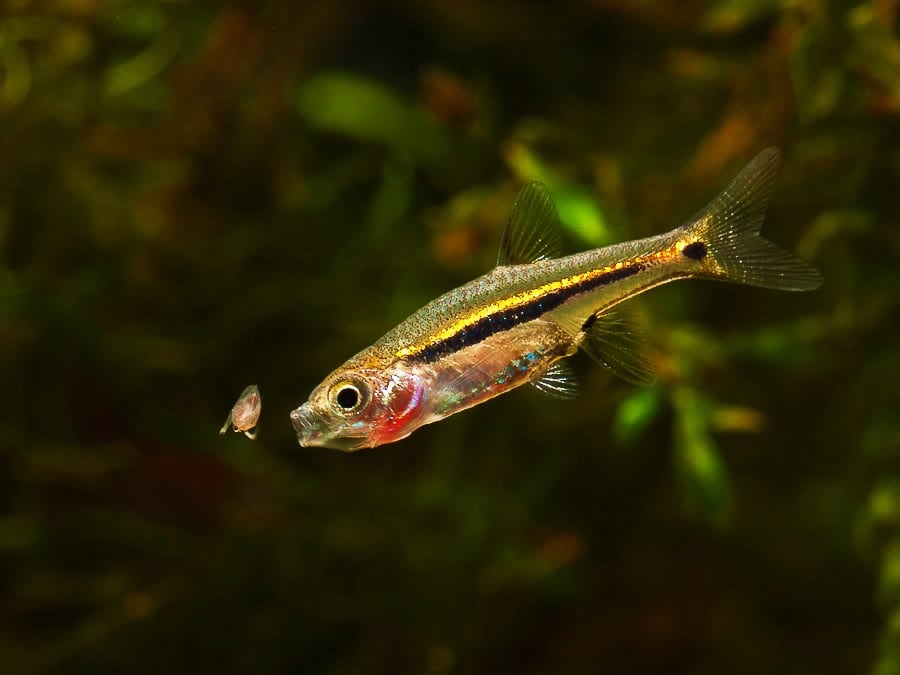This very small tropical fish belonging to the Boraras genus, is commonly known as Least rasbora or Exclamation point rasbora. This species is very small, growing up to just 16 mm in lenght.
Geographic distribution
The Least rasbora is widely distributed throughout southern Thailand, in the Sai Buri river of Pattani province, but can also be found in the central parts of the country. There’s records stating it can also be found in both Vietnam and Cambodia regions.
Its habitat is characterized by swamps, marshes and ponds with plenty of aquatic vegetation, enjoying areas with mostly clear water. During the wet season, the Least rasbora is known to temporarily move into flooded spots.
Description
This fish can be easily identified by the dark prominent lateral stripe that fades on the peduncle. The dark spot at the caudal-fin base completes the exclamation point-like shape (hence its name). The dorsal fin also has a dark mark at its base. Above the lateral stripe a reddish color can be observed.
Behaviour
Peaceful and somewhat shy, due to its very small size, this species tends to take on a timid nature in community tanks, so it’s better to avoid keeping it with other tropical fish.
As a shoaling species, it is ideal to keep the Least rasbora in a high specimen number of at least 10-12. Keeping it in a group gives the fish a certain comfort and it’s a great opportunity to see it displaying more effective, natural-looking colors. This is mostly evident in males, as while competing with each other for female attention, they tend to display their best colors.
The Least rasbora usually swim in the lower mid to middle area of the planted tank.
Feeding the Least rasbora
Easily accepts most dried food like pellets and flakes as long as it’s small enough to be consumed. But if you want it to thrive in your aquarium, make sure to also feed daily meals of small live or frozen worms and micro crustaceans like Daphnia and Artemia (brine shrimp).
Doing so will result in the best coloration while creating optimal conditions of breeding this species in your tank.
Reproduction
Males distinguish from females by being slimmer and turning red when in breeding form. Females tend to be bulkier with rounder bellies and more washed colors.
Like many small cyprinids, the Least rasbora scatters its eggs in a continuous manner and both parents lack parental care thus they will eat their eggs if they’ll spot them.
A small number of eggs will be laid daily and if your tank is densely planted, there is a good chance that some will hatch eventually.
For a more controlled reproduction, it is best to place 2-3 pairs in a separate smaller tank where they’ll be conditioned for optimal spawning results.
Keep this tank in a low light area and cover the bottom with plastic mesh which will ensure that the fish can’t reach and eat the fallen eggs.
The temperature should be on the higher side in the specified range (28°C). Place some Java moss in the aquarium and use a small air-powered sponge filter.
After the initial spawning session, expect the eggs to hatch around the second day. The fry will survive on their yolk sacs for another 24 hours or so. After this period of time they will require microscopic food. In a week to 10 days you can easily feed them newly-hatched Artemia and microworms.




